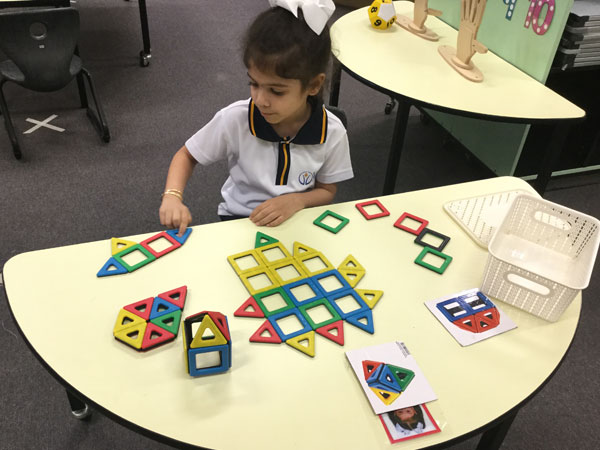At VISS, we use the Victorian Teaching and Learning Model.
The Victorian Teaching and Learning Model ensures that strategies for improving student outcomes are transmitted directly into the classroom. Whole-school improvement plans directly influence, and are in turn influenced, by classroom practice.
Adapting the Victorian Teaching and Learning Model to our UAE context
The teaching and learning model at Victoria International School of Sharjah ensures that our Senior Leadership, school leaders, teachers, students and parents/carers can work together in strong, effective learning communities, that create and sustain better outcomes for students. Our community focuses on high impact improvement initiatives driven through evidence-based decisions about teaching and student learning.
At Victoria International School of Sharjah, our Teaching and Learning model consists of five components:
- the Vision for Learning,
- Practice Principles,
- the Pedagogical Model,
- High Impact Teaching Strategies,
- and the VISS Lesson Framework.
These components are informed by our School Improvement Cycles and Strategic planning each year, in reference to the Victoria Education Department’s Framework for Improving Student Outcomes (FISO) and the direction of the Sharjah Private Education Authority. We are proud of our bi-cultural partnership and seek to provide an environment where all students can access their learning equitably.
 High Impact Teaching Strategies (HITS)
High Impact Teaching Strategies (HITS)
At Victoria International School of Sharjah, students will encounter highly trained teachers, with sound instructional practices designed to meet all learning needs. A key component of these practices are the High Impact Teaching Strategies, or HITS. All teachers at VISS are trained and regularly observed for their implementation of the HITS into their classroom teaching practice.
What are the High Impact Teaching Strategies (HITS)?
The HITS are 10 instructional practices that reliably increase student learning wherever they are applied. They emerge from the findings of tens of thousands of studies of what has worked in classrooms across Australia and the world. International experts such as John Hattie and Robert Marzano have synthesised these studies and ranked hundreds of teaching strategies by the contribution they make to student learning. The HITS sit at the top of these rankings.
When you enter a VISS classroom, you should observe the teacher:
- Setting clear goals with students for each lesson and / or unit of work
- Structuring their lesson in a way that allows students to engage with their learning in multiple modes and through structured activities
- Providing explicit teaching of key concepts, skills and ideas
- Providing worked examples to guide students
- Providing collaborative learning experiences, so that students don’t just learn facts, but learn to interact and work with others, share perspectives and shape new understandings.
- Revisiting past learning, so that students have multiple exposures to concepts, skills and ideas
- Employing metacognitive strategies, so that students become self-aware of the learning process
- Allowing for questioning, both from their part, but also encouraging students to question
- Providing timely and informative Feed Up, Feedback and Feed forward, so that students know where they are going, what they have done well and what their next steps need to be.
- Differentiating their teaching, so that students can access all learning equitably, regardless of their diverse learning needs and social backgrounds.
For more information on the High Impact Teaching Strategies, please watch the video below, or for further reading, download the Victorian Department of Eduction's Guide to the HITS
